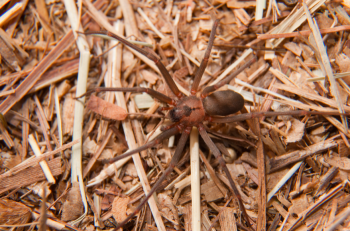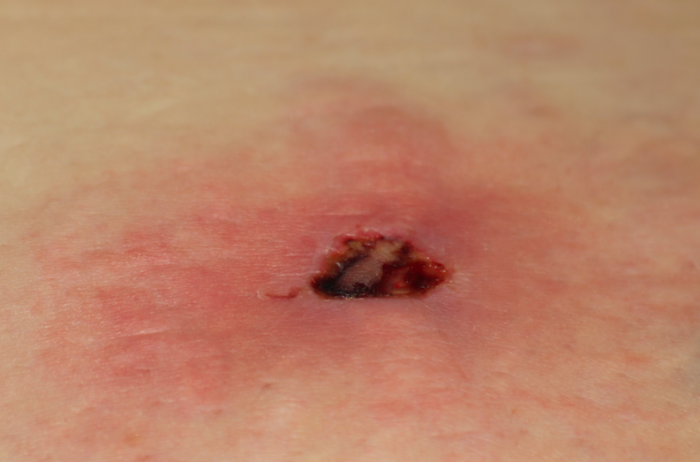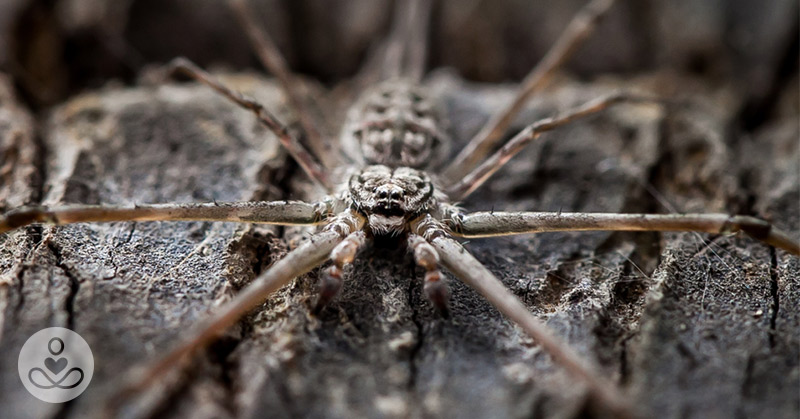Tina Bradish and her husband Tim, who hail from Muskegon, Michigan, are a couple that love to spend their free time up north (1). But their latest trip near Sleeping Bear Dunes ended in disaster when one small spider bite turned into a major problem for Tina (1).
How A Small Bite Turned Into A Medical Emergency

Tina’s initial symptoms were nothing more than two small spider bites on her arm that felt itchy (1). However, her symptoms quickly worsened and the two bites started to swell and turn dark red about 10 days afterward (1). Tina explained the severity of the escalating situation, stating, “It was stretching my skin so far that I could not stand the pain” (1).
Tina ended up going to the hospital where doctors recommended she get the bite checked out (1). There turned out to be irreversible damage done to her skin, which had started dying (1). Tina’s injuries got worse from there and began to spread up to other parts of her arm (1). She made another trip to the emergency room and found out what caused her spreading injury – a brown recluse spider had bitten her (1).
Telltale Signs of Brown Recluse Spiders & Where They Can Be Found
Brown recluse spiders are one of four spider species known to be dangerous to humans (2). An easily recognizable feature of brown recluse spiders is their violin pattern on the back of the cephalothorax, the section of the body that attaches to the legs (2). The base of the violin pattern can be found on the head of the spider and the neck of the violin points toward the spider’s rear (2).
Brown recluse spiders are not hairy and have a yellowish-tan to dark brown color (2). Their legs are typically a darker color than the rest of their bodies and are about one inch long (2). Brown recluse spiders can grow to be the size of a quarter (1).
This deadly spider resides in Midwestern and Southeastern states (2). Populations of brown recluse spiders are rarely found outside these areas, however, increasing travel has led to the spider being found in areas where it is not endemic (2). Entomologists aren’t sure whether or not this is what happened in Michigan, or if the spiders’ home range is expanding (2).
Common Symptoms of a Brown Recluse Spider Bite

Brown recluse spider bites usually go unnoticed initially because they are relatively painless (2). Symptoms typically develop two to eight hours after the initial bite (2). Some common symptoms of a brown recluse spider bite include severe pain at the bite site, nausea, vomiting, itching, fever, and muscle pain (2). Occasionally, the bite site will blister and the skin will become nectoric, which is what happened to Tina (1).
Getting bitten by a brown recluse spider is a serious matter that can result in significant disease and even death (2). If you think you’ve been bitten by a brown recluse spider seek medical attention immediately. Read this next to learn how to deal with spider infestations in your home.
Sources
- (1) Muskegon woman hospitalized after being bitten by a Brown Recluse Spider in Northern Michigan. (2018, June 21). Retrieved from https://www.wzzm13.com/article/news/local/michigan/muskegon-woman-hospitalized-after-being-bitten-by-a-brown-recluse-spider-in-northern-michigan/566059216
- (2) Balentine, J.R. (n.d.). Brown Recluse Spider Bite. Retrieved from https://www.emedicinehealth.com/spider_bite_brown_recluse_spider_bite/article_em.htm#facts_on_brown_recluse_spider_bite

